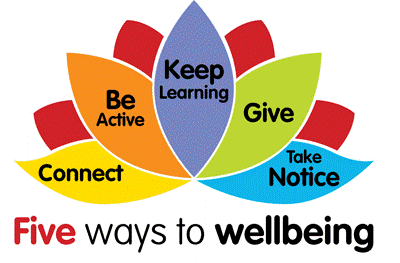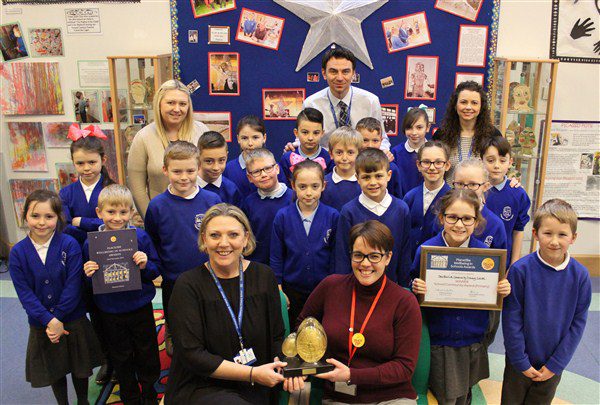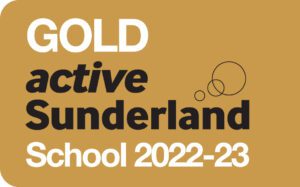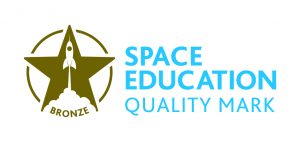We have all thoroughly enjoyed celebrating World Space Week focusing on the theme of humans in space. Take a look at what we’ve all been up to…
Nursery
Nursery have enjoyed reading the book “Whatever, next” and retelling the story in the home corner using props such as wellies, colanders, and cardboard boxes to retell the story and use our imagination to pretend we are astronauts. Not forgetting our moon picnic, just like in the story with honey sandwiches, biscuits and apple, it was delicious! We have enjoyed reading a range of both fiction and non-fiction books in the reading area. Nursery used google earth to explore and learn all about the Planet we live on. We have had so much fun watching videos of astronauts in space and the way they live and eat in space without gravity!
In PE we took part in an astronaut assault course. We practiced our moon walking and had so much fun doing this.
We got messy making our very own moon rock, using, flour, water, glitter and paint, we baked them in the oven and the went from being soft and gloopy to hard as (moon) rocks! We used small hammers to break them apart.
We have enjoyed building rockets in the construction area, exploring the space themed tuft tray, making stars and planets in the play-dough area, also using 3D shapes and paint to print our own rockets.















Reception
We’ve had a great week exploring space in Reception! We have been very busy learning about Neil Armstrong and Tim Peake. We have been looking at the moon landings, modern day astronauts and how they travel. We have had lots of fun exploring space themed activities in the provision including building our own rocket our of junk materials, creating space pictures, trying space food and making rockets out of fruits.


















Year 1
Year 1 had a super time learning throughout space week. We started off reading the story ‘The First Hippo on the Moon’ by David Walliams, which we loved. We sequenced the story- discussing what we could see happening on the different pages. We were particularly fascinated at how it would have felt being left stranded on the moon. We created our own pictures, showing what you would see if you were on the moon and how it would make you feel. We learnt lots of new scientific vocabulary. We then created our own moons, painting and printing to make crater effects on the page, using powder paint. In PE, we completed our very own astronaut assault course, using the skill of jumping and skipping. We then completed our VIPERS session linked to the moon and came up with a range of vocabulary to describe what we could see. We had a super time!
















Year 2
For space week we have focused on the sustainability of space and how humans have used it. To do this we focused on the important historical events that have happened over time about all of the different people that have been to space. We discovered that not only have humans from lots of different countries travelled to space but animals have too! Also, we have learned about the different machines that have been used to explore space by humans such as rockets and rovers that are used to gather information about space, the planets and the sun and then send all of this information back to earth. Finally, we explored the different purposes of why humans travel to space. We have learned that by travelling to space, we can gather important information such as photographs of the sun, whether there is liquid on any of the planets and if life can live and survive in space! Once we had gathered all of the information about space time travel, we ordered the facts on a timeline in chronological order which outlined who was the first person to travel to space to the most recent.










Year 3
For Space week 2023 we have spoken about the importance of having astronauts and how their research can provide us with lots of important information about our planet. We know that astronauts have a very difficult job and it takes many years of training to qualify. We looked at the British astronaut Tim Peake and how the way he lives on the International Space Station is different to how we live on Earth. We also looked at how our living situations are similar. We loved finding out how astronauts go to the toilet in space where there is no gravity. As part of space week, we looked at the growing importance of bionic hands and how they can make it safer and it can be more efficient for astronauts to complete their research. We then tried to create our own bionic hands adapting our designs as they progressed. We tested to see if they were successful by trying to pick up a scrunched up piece of paper. We had so much fun trying to make them.
























Year 4
Year 4 have been looking at space suits through history. We looked at the materials and designs and ordered them chronologically. We could not believe how much they have changed! We then looked at the functionality of the space suit and how it was to protect astronauts from the cold, radiation, allow them to breathe and also had to allow them to move easily. We looked at the materials used and incorporated these into our own designs. We then looked at how we could make our suits personalised to The Artemis Mission and created a patch for our suits. We made sure our suits were lightweight but could protect the astronauts too.
Year 4 also looked at what astronauts eat during their stays on the ISS. We looked at how the ISS still feels 90% of the gravity we do and the reason they ‘float’ is because the station is constantly falling towards earth as it orbits the planet. We then looked at what and how they ate and drank as the food and drink would literally float away! We looked at how food had to be dehydrated and packaged so they could transport it then rehydrated before eating.
We then looked at foods that would be too messy for space-bread would leave crumbs so wraps were a better option! We then looked at the food groups again and designed a meal that the astronauts on the ISS could have.








Years 5 and 6
In UKS2, we were set a mission to investigate the materials that will block UV light and still allow an astronaut to carry out vital work on the International Space Station. We did this by completing a fair test and following the method below:
- Place two petri dishes in a box (without lids).
- Place one bead in each petri dish.
- Cover the first dish with your chosen material (aluminium foil, cotton, felt and plastic). Leave the second uncovered as a control.
- Take the box outside to expose the samples to sunlight (for ground floor classrooms you could hold the samples outside an open window).
- Wait for 30 seconds or until the control turns to the deepest colour on the chart (number 10), whatever comes first.
- Quickly bring the box inside and remove the material from the first dish to reveal the bead’s colour. Match it to the nearest colour on the colour chart (NB the bead may lose colour quickly. If the change is too quick to record, repeat steps 7–9).
- Record the colour chart number for your material on the results table.
- Repeat with more materials or compare class data to complete the results table.
















Comments are closed.